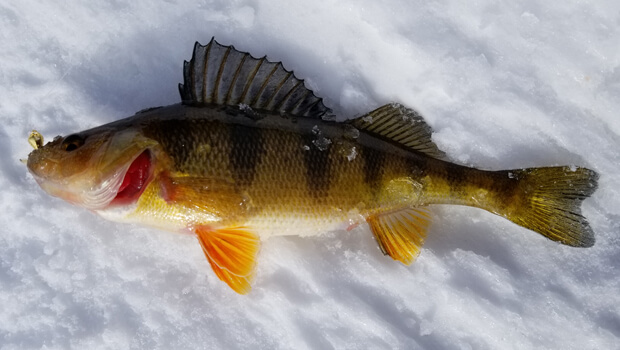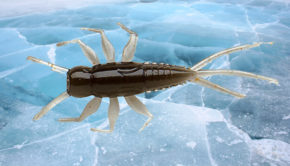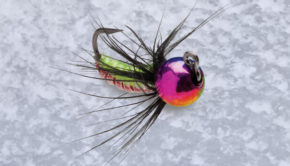Why to use tungsten jigs when ice fishing
Jigs made from tungsten rather than lead or even tin have become more popular in recent years. But they’re also more expensive than the old traditional jigs that we have been using for ages. So you might wonder why you would want to use tungsten jigs when you could just stick with stuff that has been working for decades.
We all know that ice fishing jigs catch fish. So of course you can still continue to catch fish on lead jigs. There is no question about that. But tungsten has some properties that lead lacks. This makes tungsten jigs more effective than led in a lot of situations.
Ice fishing reviews is reader supported. When you buy things through links on this site, I may earn a commission. Thank you!
Why tungsten jigs are better
In many ice fishing scenarios, tungsten jigs are one of the best lures you can use. Even a plain gold tungsten jig like the Clam Drop Jig will catch all sorts of fish ranging from trout to panfish and even bass. Other more complex jigs like these Diamond Heads work well too. But the biggest advantage is in the tungsten material itself.
First, tungsten is much more dense than lead. A 1″ cube of lead weighs 0.41 pounds. A 1″ cube of tungsten weighs 0.7 pounds. So you can fit more weight into the same size jig if you use tungsten rather than lead. Smaller jigs often mean more bites when ice fishing. Fish in cold water are looking for easy meals. A small bit of food is easy to suck in with little effort. When you downsize your jigs a day of fish just looking can turn into a day of fish biting.

The second great feature about tungsten is that it work very well with flashers. I noticed this years ago on my Marcum M1. I sometimes struggled to pick up small 1/100 lead jigs on my flasher when plumbing the depths. But when I tie on a tiny tungsten jig I can follow it all the way down to the bottom on my Marcum. This is especially good for bottom bouncing on very cold days.
Third, there is the time it takes for a small jig to fall through the water column. A lot of times fish are stacked up down deep. If you’re using a little lead jig it can take ages to get your bait down the strike zone. If you’re using heavy line or fishing in bad weather conditions, it can actually seem impossible to get a tiny 1/124 lead jig down deep. But tie on a tungsten jig and watch it drop right through the water column in an instant. This helps you get back to where the fish are time after time. That’s great when you’re working a hot bite!
Finally, you can fish with heavier line if you need to. A small lead jig won’t even straighten out your line if you’re using something like four pound test. But a small tungsten jig will keep your line straight even at that strength, so you can sense bites and still have more room to bring in fish that are bigger or situated among a lot of snags.
Downsides to tungsten jigs
There are some downsides to tungsten jigs, but they are pretty minor in the grand scheme of things. The first is the price. Tungsten jigs cost a lot more than lead jigs, but you can pick up a good assortment of tungsten jigs like this Tungsten Ice Fishing Glow Jig Kit with Tackle Box from Amazon for a good price.
The second negative of tungsten jigs is that you can’t really make them yourself. Or at least not in the way you might be used to doing. It is easy to pour your own lead jigs, and so a lot of serious ice fisherman do this. But tungsten is a different material that you can’t just melt and pour at home. Most tungsten jigs are actually made by soldering preformed pieces of tungsten to hooks. This might not be an issue for most people, but it is worth mentioning.
The last thing to consider is speed of fall. Tungsten falls faster in the water, as I said above. In many cases that is a good thing. But if you want to present your bait slowly to finicky eaters, lead jigs can actually be better. Leads falls slower in the water so it gives lethargic fish more time to consider. In certain conditions, this can lead to more bites on lead jigs than their tungsten counterparts.















